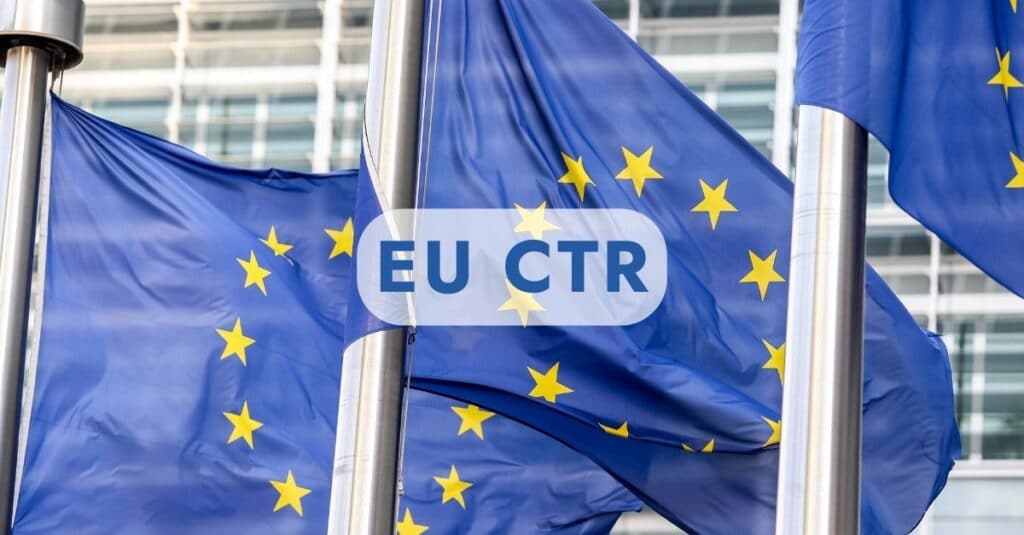
2024 is here and will be a crucial year for your clinical trials in the European Union (EU) and European Economic Area (EEA). It is the last year of the transition period to the full implementation of the EU “CTR”, the European Regulation for Clinical Trials (EU 536/2014).
What does this mean?
By the end of January 2025, all your clinical trials initiated under the Clinical Trial Directive (“CTD”, Directive 2001/20/EC) and with at least one active site in the EU on 30 January 2025. will have to be transitioned to the CTR.
Transitioning your trial will allow you to operate your clinical trial application maintenance under the CTR framework, in a harmonized manner among all member states concerned by your trial.
Transitioning to the CTR implies two consecutive steps:
First, logging the concerned clinical trial into the Clinical Trials Information System (CTIS), the new online environment for clinical trials in the EU. This step is completed with submission for authorization of a transitional application.
The transitional application review timeline is theoretically of 60 calendar days, and up to 106 days in case of rounds of requests for information (RFI) from member states during the procedure. Thanks to European coordination groups in place, an expedited procedure is currently available.
Then, bringing clinical trial documents in line with the CTR requirements. Should any document part of the transitioned clinical trial’s application dossier require substantial changes to comply with the Regulation, amended documents will have to be submitted for authorization at the latest with the first Substantial Modification (SM) procedure (to Part I and/or Part(s) II, as relevant).
Check our review of the Key points in the CTR transition of clinical trials for confirming eligibility of your clinical trials and reviewing major milestones to achieve it.
When is it required?
For those studies concerned by the CTR transition, sponsors have until the end of the 3-year transitional period to complete the first step above: due date is 30 January 2025. The transitional application must be approved before this due date. Therefore, sponsors should consider review timelines as part of their planning and are therefore advised to transition as soon as possible.
To facilitate the transition burden on sponsors, the European Clinical Trial Coordination Group (CTCG) has incentivized member states to an expedited review procedure for transition. This expedited review allows shortening the review timeline down to a theoretical maximum of 22 days provided that no RFI would arise: validation in 10 days (without RFI) + assessment in 7 days (without RFI) + decisions released within 5 days.
The expedited procedure can be granted to application dossiers complying with a list of minimal requirements restricted to documents previously authorized under the CTD, and will be available until 16 October 2024. After that date, and depending on the member states’ workload, it cannot be warranted that expedited review timelines will be granted by member states concerned. We expect the experience with transition timelines to become less favorable the closer we get to this recommended timepoint.
According to the last statistics from the ACT EU Priority Action 2 – January 2024:
- Average review timeline for transitional applications seems to be increasing. Stable around 40 calendar days since mid-2023, it increased significantly over the beginning of 2024 to approximately 60 calendar days.
- As of January 2024, 752 transition applications have been submitted, out of the approximately 4,500 clinical trials to be transitioned.
We anticipate this to provoke a bottleneck effect the closer we will get to the deadline, as the member states’ workloads will be heavier, with probable impact to lengthen timelines up to the theoretical maximum mentioned above.
What shall sponsors do?
We invite all concerned sponsors to make CTR/CTIS transitions a priority during the first half of 2024. By benefitting from still extremely convenient timelines, you will optimize your ability to remain agile, benefit earlier from the improvements of the CTR operating schemes, and immobilize your trial’s regulatory life cycle for a shorter period of time.
Our regulatory experts’ advice
We have gathered extensive practical experience of transitioning both mono- and multinational trials to the CTR. Here are our key recommendations:
“Regulatory intelligence is key for success!”
CTR in general, and CTR transition in particular, is a groundbreaking change for all stakeholders. New information on the processes, practical guidance documents, and Q&As are published/updated very regularly on the different official platforms.
- Make sure to benefit from a robust training to get acquainted with the CTR’s features, and support continuous regulatory surveillance to remain aware of any change or new disposal timely.
“When considering necessity to transition your “borderline” trial, reassess periodically your study metrics”
“Borderline” trials are defined by the EMA as trials of which the planned end of trial date is close to the transition due date. These trials may or may not require transition depending on how likely they are to achieve end of trial before that date.
- Make sure to monitor your study progress regularly to assess likelihood of the study to require transition, or not. Out tips: if the uncertainty is high, opt for the safe option and plan for your transition.
“A target gap-analysis of your CTA will help you designing your take-off checklist and defining priorities”
Transitional application requires the study to comply with a number of prerequisites already, while many other novelties from the CTR can be addressed after the transitional application (with the first Substantial Modification submission). A target review of your CTA, aimed at CTR compliance key points, will help you planning your transition activities.
- Make sure to confirm compliance with prerequisites and submit your minimal requirements transitional application as soon as possible to be eligible to the expedited procedure! Then, take the time to prepare your full CTR compliance as it can be performed beyond the transition due date.
“For multinational trials: team up with the most suitable Reference Member State (RMS) for your trial!”
As part of CTR transition, similarly to initial applications, sponsors are offered to propose a member state, among participating ones, to be appointed as RMS. The RMS operates a key coordination and administrative role with significant impact on CTIS operations.
- Make sure to collect feedback from recent experience in order to maximize the benefits of CTR’s harmonized procedures conducted by the RMS.
“CTR’s Transparency shall be driven by a company policy”
CTR’s Transparency provisions, addressing the public disclosure of some of the clinical trial application data and documents, is applicable to transitioned trial as well. As for initial application, transparency compliance strategy should be defined at company level, to ensure consistency through the development program and/or across programs.
- Make sure to get support from regulatory and data privacy experts, jointly, to prepare a sound, relevant, and agile transparency-compliance strategy in parallel of preparing your application.
It is time for action! Do not wait any longer to work on your CTR transition and submit it at the earliest opportunity.
Published on: April 2, 2024







